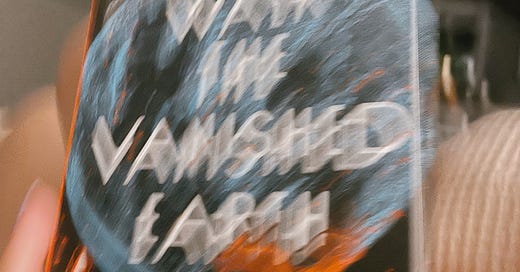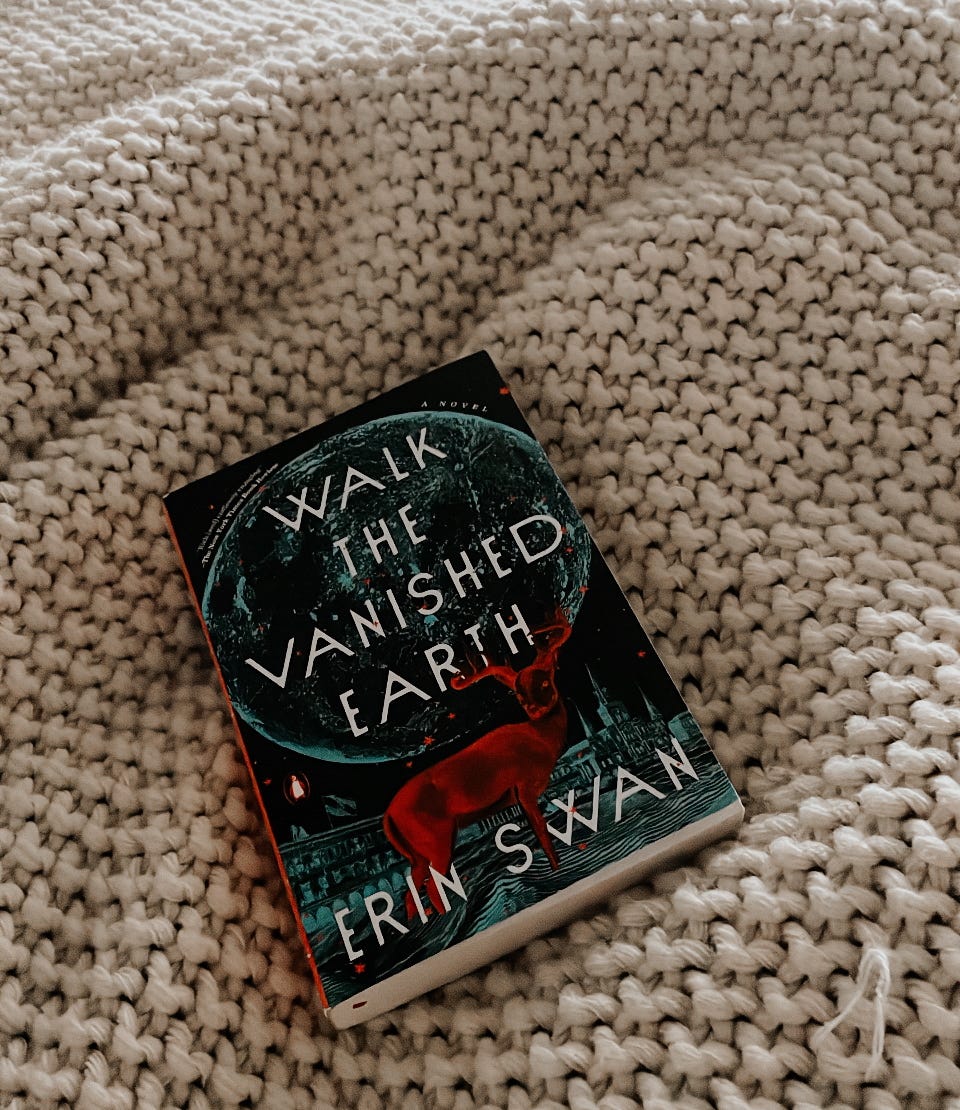In 2014, Erin Swan wrote a story about a girl named Bea within the span of 48 hours. “I had envisioned a girl walking across a grassland, an echo of the female figure in Andrew Wyeth’s painting “Christina’s World,” which I had recently used in one of the high school classes I teach,” Erin wrote in a piece titled How Writing About the End of the World Helped Me Find Hope. “In my vulnerable state, I saw this girl as traumatized, so shaken by what she had experienced she thought the entire world had ended, when in reality only her own world had.”
Like many transformative novels do, Walk the Vanished Earth began outside its author and found its way in through a vision. Erin Swan saw an entire complex story collapsing, gestating, and outliving us within a flash; she just didn’t know it yet.
Sometimes you read a story and you know that one of three things is happening:
You have stumbled onto an author so brilliant and complex you will never see storytelling the same again.
- ’s theory about creative ideas being living souls that come to you and ask to be brought out into the world is undeniably true.
Both.
Walk the Vanished Earth falls into the third category. So now, compelled by the poet in my soul, the muse in my inner territory, the ink in my veins, I have no choice but to tell you about her. It is my sworn duty to the world. If we aren’t drawing one another maps to where books are alive, what are we doing?
This is a story that orbits Bea, a girl whose trauma and inherited visionary mental illness have led her through the flames of one world ending and into another. However, this is not a story that begins with Bea; it only circles her. There is a difference. She is somehow the sun - rising and setting, nourishing and destroying. She is outrageous, wild, unhinged, and brilliant. Bea is a girl who has survived the unthinkable and tossed around the details of her memory so that they don’t collect between the walls of life and drown her. When we first meet her, she is no more than 11 and pregnant with what she is certain is a giant, the beginning of a new species.
Throughout Swan’s debut novel, we flow backward and forward in time. We meet characters we cannot understand right away but who we want to. 1873 in the Kansas prairie, 2073 traveling across the red dirt of Mars, 1975 at the end of Bea’s world, and 2027 when the world as we know it floods. The story itself is circular, cyclical, an ouroboros. And in a rare, expert way, Swan strings information between every character and every timeframe in a way that makes an entirely new world out of chaos. By the last page, every question has been answered, every thought has been recognized, and every singular string has taken its place in a wide universe of world-building.
I found poetry humming here. A lovely, genius, hopeful, honest kind of poetry. It burns the way it should. It loves the way you want it to. It aches the way humanity always will.
This is a story of the endings that birth beginnings. It is painful, grief-stricken, hopeful, and shatteringly breathtaking. If nothing else, maybe you let all 373 pages remind you that, even when our worlds have ended, there is always a new one beginning.
*book links are affiliate links and I am always so grateful when you choose to use them





